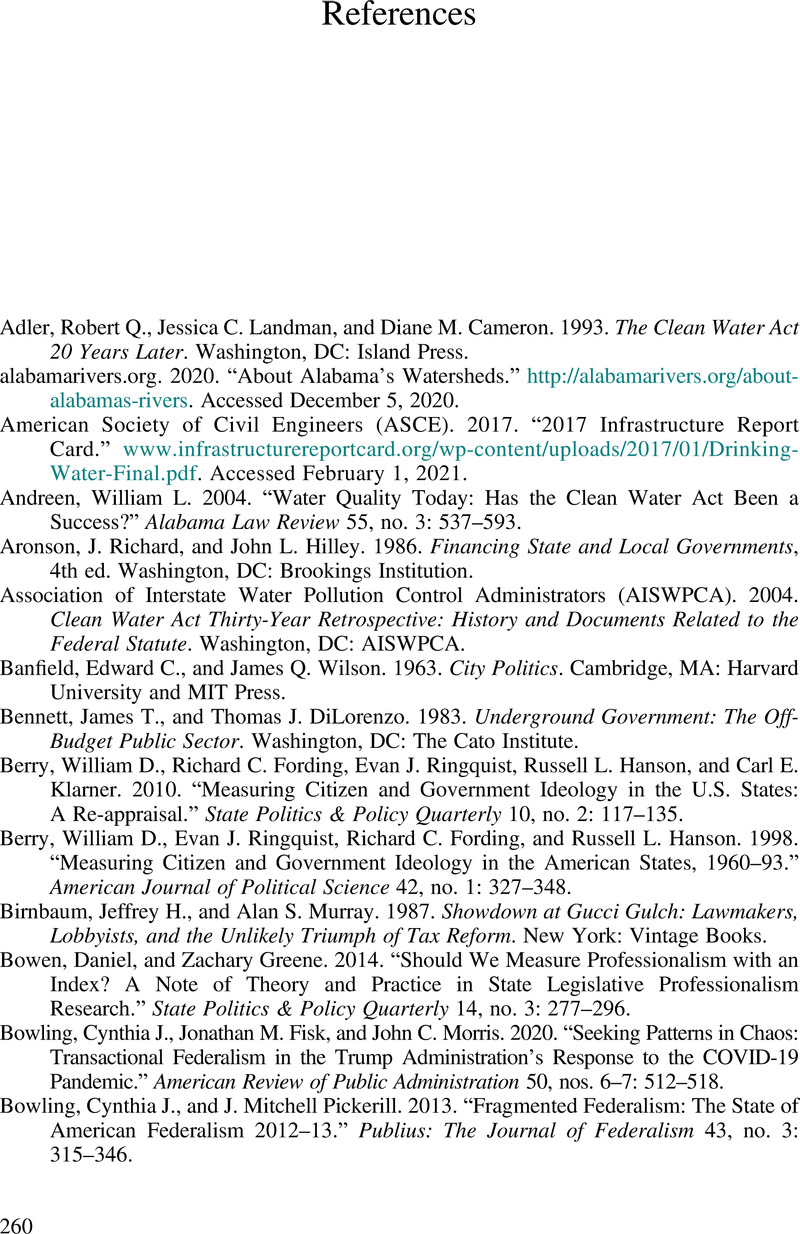Book contents
- Clean Water Policy and State Choice
- Clean Water Policy and State Choice
- Copyright page
- Dedication
- Epigraph
- Contents
- Figures
- Tables
- Foreword
- Acknowledgments
- Abbreviations
- Introduction
- 1 Setting the Stage
- 2 Reagan Federalism, States’ Rights, and the Revolving Loan Fund Model
- 3 The Foundations of Water Quality Policy in the United States
- 4 Expansion and Contraction in the Federal Role in Water Quality Policy
- 5 Features of the Water Quality Act of 1987
- 6 A Model of State Implementation of the Clean Water State Revolving Fund Program
- 7 Initial State Implementation of the Revolving Loan Fund Model
- 8 Implementation “On the Ground”
- 9 The Distributional Impacts of the CWSRF
- 10 Promise and Performance
- Book part
- About the Author
- Notes
- References
- Index
- References
References
Published online by Cambridge University Press: 10 March 2022
- Clean Water Policy and State Choice
- Clean Water Policy and State Choice
- Copyright page
- Dedication
- Epigraph
- Contents
- Figures
- Tables
- Foreword
- Acknowledgments
- Abbreviations
- Introduction
- 1 Setting the Stage
- 2 Reagan Federalism, States’ Rights, and the Revolving Loan Fund Model
- 3 The Foundations of Water Quality Policy in the United States
- 4 Expansion and Contraction in the Federal Role in Water Quality Policy
- 5 Features of the Water Quality Act of 1987
- 6 A Model of State Implementation of the Clean Water State Revolving Fund Program
- 7 Initial State Implementation of the Revolving Loan Fund Model
- 8 Implementation “On the Ground”
- 9 The Distributional Impacts of the CWSRF
- 10 Promise and Performance
- Book part
- About the Author
- Notes
- References
- Index
- References
Summary

- Type
- Chapter
- Information
- Clean Water Policy and State ChoicePromise and Performance in the Water Quality Act, pp. 260 - 271Publisher: Cambridge University PressPrint publication year: 2022

